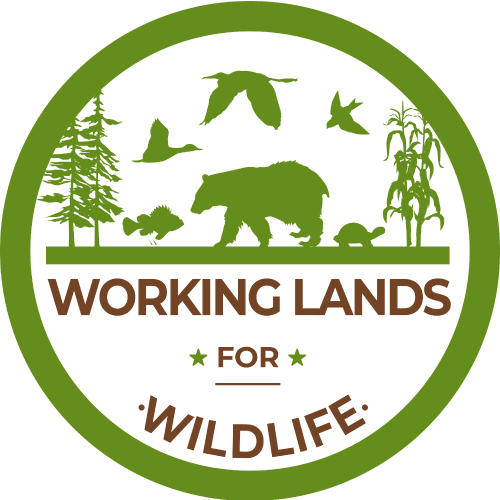-
NRCS Working Lands for Wildlife Presents: Breakfast With Biologists-March 27th 2025
-
by
Web Editor
—
published
Mar 14, 2025
—
last modified
Mar 14, 2025 06:06 PM
—
filed under:
WLFW,
American Black Duck,
News & Events,
Bog Turtle,
Northern Bobwhite Quail,
Quail Forever,
Grasslands and Savannas,
News,
Events
Woodstown, NJ – Quail Forever, in partnership with Ducks Unlimited and the New Jersey Audubon Society, will cohost an informational outreach event for landowners on Friday, March 27th, from 7:00 am to 9 am at the Woodstown Diner. The event aims to provide landowners with valuable information on habitat restoration and wildlife conservation efforts available to them.
Located in
News
-
NRCS Working Lands for Wildlife Presents: Breakfast With Biologists-July 24th 2025
-
by
Web Editor
—
published
Jul 10, 2025
—
last modified
Jul 12, 2025 03:22 PM
—
filed under:
WLFW,
American Black Duck,
News & Events,
Bog Turtle,
Grasslands and Savannas,
News,
Northern Bobwhite Quail,
New Jersey Audubon,
The Xerces Society,
Quail Forever,
Ducks Unlimited,
Events,
USFWS
Learn about NRCS programs and funding opportunities for pollinator, upland, and wetland habitat restoration, enhancement, and creation.
Located in
News
-
 Good for Bobwhite, Good for Cattle
Good for Bobwhite, Good for Cattle
-
by
Jessica McGuire
—
published
Sep 11, 2019
—
last modified
Nov 18, 2024 09:52 PM
—
filed under:
Information,
Published Materials,
WLFW,
General Resources and Publications,
Northern Bobwhite Quail,
Grasslands and Savannas,
Working Lands for Wildlife
America’s farmers, ranchers, and forest landowners are continuing to show how wildlife and working lands can prosper together. Let NRCS develop a comprehensive, resource conservation plan for your grazing operation and the northern bobwhite.
Located in
Information
/
Published Materials
-
 WLFW Science to Solutions: Economics of NWSG Forage
WLFW Science to Solutions: Economics of NWSG Forage
-
by
Bridgett Costanzo
—
published
Mar 10, 2021
—
last modified
Nov 18, 2024 09:54 PM
—
filed under:
Information,
Published Materials,
WLFW,
livestock,
grasslands,
General Resources and Publications,
Northern Bobwhite Quail,
NWSG,
Grasslands and Savannas,
native grasslands,
northern bobwhite,
Working Lands for Wildlife,
forage,
grazine
This fact sheet is part of a WLFW series called Science to Solutions which seeks to share technical information in a format that's user-friendly. Prepared by University of Tennessee professors Dr. Pat Keyser of the Native Grasslands Management Center and Dr. Chris Boyer, an economist.
Located in
Information
/
Published Materials
-
 Beef, Grass, and Bobwhites – Quail Management in Eastern Native Warm-Season Grass Pastures
Beef, Grass, and Bobwhites – Quail Management in Eastern Native Warm-Season Grass Pastures
-
by
Bridgett Costanzo
—
published
Jul 20, 2021
—
last modified
Nov 18, 2024 09:52 PM
—
filed under:
Information,
Published Materials,
WLFW,
General Resources and Publications,
Native grasses,
Grasslands and Savannas,
prescribed grazing,
Northern Bobwhite Quail,
livestock health,
native warm season grasses,
forage,
Working Lands for Wildlife,
grazing,
Northern bobwhite
This technical bulletin is targeted to technical advisors working with cattlemen and women in the eastern U. S. who are interested in managing for bobwhites. The authors combine a review of the literature, current research and first-hand experience to present this first-of-its-kind technical manual integrating grazing and bobwhite management in the eastern U. S. Published by NBTC and funded by WLFW.
Located in
Information
/
Published Materials
-
 Map of NRCS States Opting In/Out of WLFW Northern bobwhite
Map of NRCS States Opting In/Out of WLFW Northern bobwhite
-
by
Bridgett Costanzo
—
published
Dec 30, 2020
—
last modified
Apr 20, 2023 09:49 PM
—
filed under:
Information,
WLFW,
Grasslands,
Northern Bobwhite Quail,
NRCS,
Maps and Spatial Data,
Grasslands and Savannas,
native grasslands,
Northern bobwhite,
Working Lands for Wildlife,
savanna
In February 2021, NRCS requested that 30 state offices within the northern bobwhite current or historic range submit a final decision to National Headquarters on opting in or out of WLFW Northern bobwhite, Grasslands and Savannas. The decisions were completely voluntary and dependent on each states interest and ability to commit. These maps depict the distribution of states and their responses. Note that Oklahoma has now joined (and we need to updated this map)!
Located in
Information
/
Maps and Spatial Data
-
 WLFW Northern bobwhite, Grasslands, and Savannas National Map
WLFW Northern bobwhite, Grasslands, and Savannas National Map
-
by
Bridgett Costanzo
—
published
Mar 05, 2022
—
last modified
Apr 20, 2023 09:55 PM
—
filed under:
Map,
GIS,
Information,
Grasslands,
Northern Bobwhite Quail,
Grasslands and Savannas,
framework,
Savannas,
Maps and Spatial Data,
WLFW,
Working Lands for Wildlife,
Priority Areas,
Northern bobwhite
Attached pdf of the national boundary for the new framework for conservation action (2022). Shapefiles available under "Boundaries and Priority Areas"
Located in
Information
/
Maps and Spatial Data
-
 Illinois Priority Area Shapefiles
Illinois Priority Area Shapefiles
-
by
Sage Voorhees
—
published
Mar 05, 2022
—
last modified
Apr 20, 2023 10:01 PM
—
filed under:
Information,
WLFW,
Central,
Northern Bobwhite Quail,
Illinois,
Boundaries & Priority Area Shapefiles,
Maps and Spatial Data,
Grasslands and Savannas,
Working Lands for Wildlife,
Central Region
Shapefiles for Northern Bobwhite Priority Areas
Located in
Information
/
…
/
Boundaries & Priority Area Shapefiles
/
Central Region
-
 Indiana Priority Area Shapefiles
Indiana Priority Area Shapefiles
-
by
Sage Voorhees
—
published
Mar 05, 2022
—
last modified
Apr 20, 2023 10:32 PM
—
filed under:
Information,
Central,
Grasslands and Savannas,
Northern Bobwhite Quail,
Boundaries & Priority Area Shapefiles,
Indiana,
Maps and Spatial Data,
WLFW,
Working Lands for Wildlife,
Central Region
Northern Bobwhite Priority Areas
Located in
Information
/
…
/
Boundaries & Priority Area Shapefiles
/
Central Region
-
 Kansas Priority Area Shapefiles
Kansas Priority Area Shapefiles
-
by
Sage Voorhees
—
published
Mar 05, 2022
—
last modified
May 07, 2025 11:06 PM
—
filed under:
Information,
Maps and Data,
WLFW,
Central,
Kansas,
Northern Bobwhite Quail,
Boundaries & Priority Area Shapefiles,
Grasslands and Savannas,
Working Lands for Wildlife,
Central Region
Northern Bobwhite Priority Areas
Located in
Information
/
…
/
Boundaries & Priority Area Shapefiles
/
Central Region


